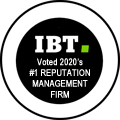Reframing, Essential for Branding and Rep. Management Domestically & Abroad - p.1
Ryan Buddenhagen, May 9, 2012
 Reframing has a few different definitions but in terms of PR and branding, it is considered as keeping the conversation being had with audiences (on both the macro and micro scale) on point by bringing it overtly or softly back on message. Reframing has its roots in psychology and communication relating to reframing an idea…seeing it in a different light which can translate to a new and improved approach to the idea or mood surrounding it. As an example, I wrote about this practice in the first of two pieces on the subject before on the blog back in March discussing reframing the challenge of culture when a company expands into a new country as an opportunity to excel. Here's an excerpt:
Reframing has a few different definitions but in terms of PR and branding, it is considered as keeping the conversation being had with audiences (on both the macro and micro scale) on point by bringing it overtly or softly back on message. Reframing has its roots in psychology and communication relating to reframing an idea…seeing it in a different light which can translate to a new and improved approach to the idea or mood surrounding it. As an example, I wrote about this practice in the first of two pieces on the subject before on the blog back in March discussing reframing the challenge of culture when a company expands into a new country as an opportunity to excel. Here's an excerpt:
As there are so many facets to its [culture's] impact on communication (e.g. internal communication with local employees, communication/PR with the businesses’ publics/audiences, and communication/marketing with customers), the goal is not necessarily to minimize its negative influence but instead use cultural and communicative differences to your advantage. Rather than asking, “how badly is the language and cultural barrier going to impact us[?],” ask “how much can we leverage our ability to adapt and deliver a locally relevant experience for our customers to further separate us from our competitors?” That is redistributing the power back to your business, framing a challenge as an opportunity to excel.
With that context, I am going to look at reframing in terms of branding and reputation management. During campaigns the macro conversation, the overall gist of the two-way communication between the business and its audiences, can take a turn in an unfavorable direction. Marketers and the SEO companies they are working with in their online branding need to reframe the conversation on the large scale in these cases to push the subject away from the negative towards the core message.
Doing this softly and tactfully entails addressing the concerns or negative comments brought up by the various audiences but then stressing the positive changes the company may have made or transitioning to the core message. Pushing the core message without addressing the negative issues at all is usually received as disingenuous by audience members. So recognizing the audience comments that address challenging issues or negative subjects and then transitioning to the core message the business wants to concentrate on is where the skill lies. Doing it in a manner similar to the way the press secretary office for the White House does represents one example path but being overly diplomatic can be frustrating for audience members. Instead, authentic two-way communication should be engaged in which is difficult but in the end essential for positive branding and reputation management.
Tomorrow, I'll address the second part of this post, looking at how reframing is done and its relevance for domestic and international operations.





